Omgivning Launches Historic House Relocation Project to Help Fire-Affected Families in Altadena

The first two homes to be moved as part of the Historic House Relocation Project. Left: 1853 Taft Avenue, Hollywood // Right: 2919 Saint George St., Los Feliz. Photos by Morgan Sykes Jaybush, courtesy of Omgivning.
Rebuilding Altadena: Collective Action and Creative Solutions After the Eaton Fire

A look into Omgivning’s Rebuild Efforts, including historic house relocation, community partnerships, and resources for families navigating recovery.
Feasibility Assessments Steps for Adaptive Reuse
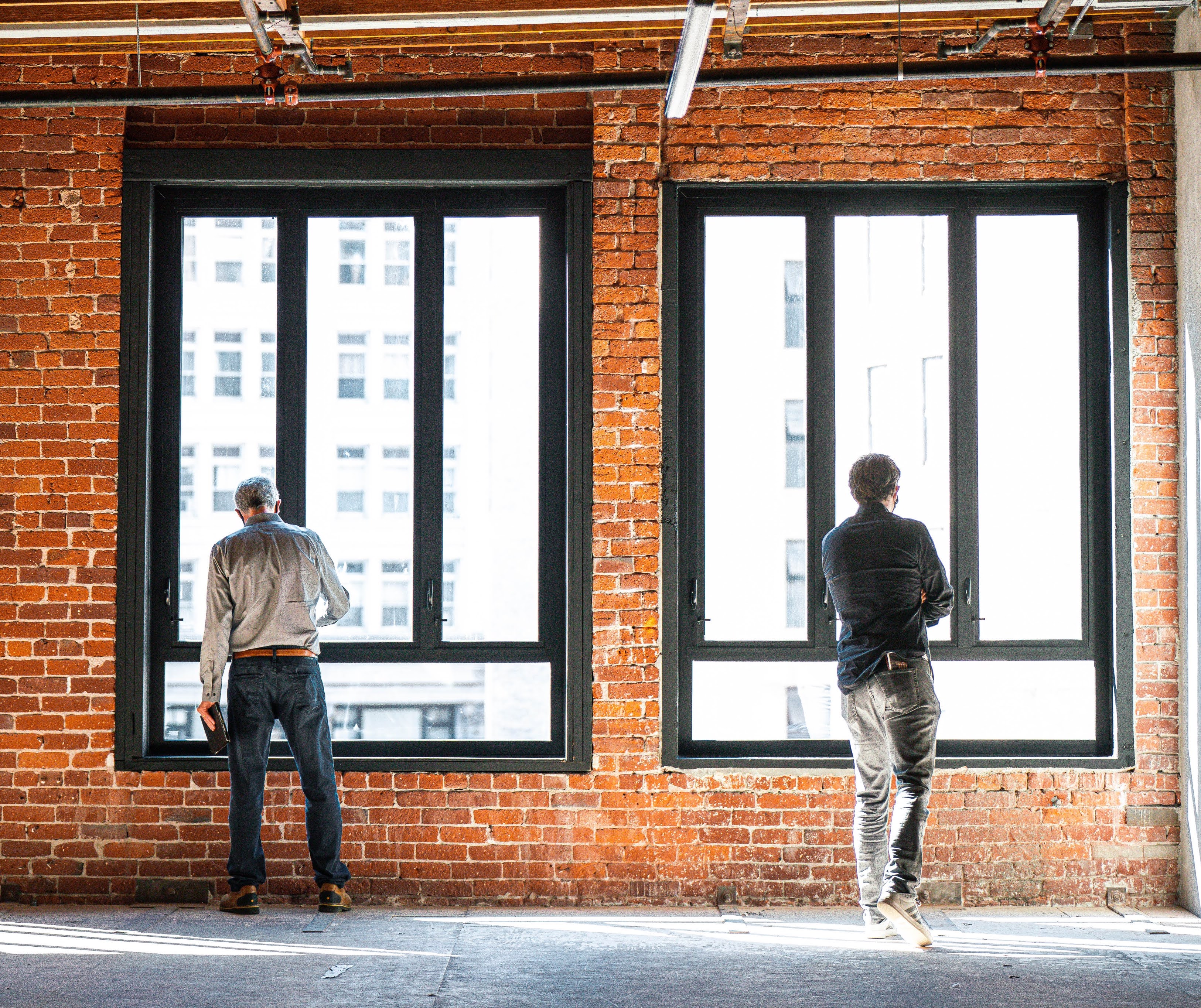
STEP ONE: Quick Start Feasibility
Is The Project Worth Pursuing?
Quick Start Feasibility is the first step in exploring the potential of your building for adaptive reuse. With a focus on a low cost study, efficiency, and actionable insights, this service is the first step for clients who need a swift yet reliable evaluation of whether a project is worth moving forward with.
Process
Site Visit
-- Brief site visit walkthrough with architect, structural engineer, and general contractor to assess the building’s current condition and potential for reuse.
High-Level Code and Zoning Review
-- High level analysis of critical codes and zoning regulations to identify potential barriers or opportunities for your project’s feasibility.
Existing Documentation Review
-- Review any existing building documentation provided.
Structural Input
-- High level analysis of seismic upgrade triggers and anticipated upgrades with ballpark cost based on comparative projects.
Deliverables
-- Plan Diagram (program diagrams showing leasable sf, unit counts, etc.)
-- Summary of initial code review, adaptive reuse incentives, and list of challenges and opportunities
-- Rough Order of Magnitude (ROM) budget
Our team, with decades of adaptive reuse experience, can quickly assess the key factors needed for our clients to decide if a project is feasible. If so, this study lays the foundation for the next step of deeper exploration onto the Viability Blueprint.
Los Angeles Conservancy Panel: Adaptive Reuse and Preservations Broader Role in Housing
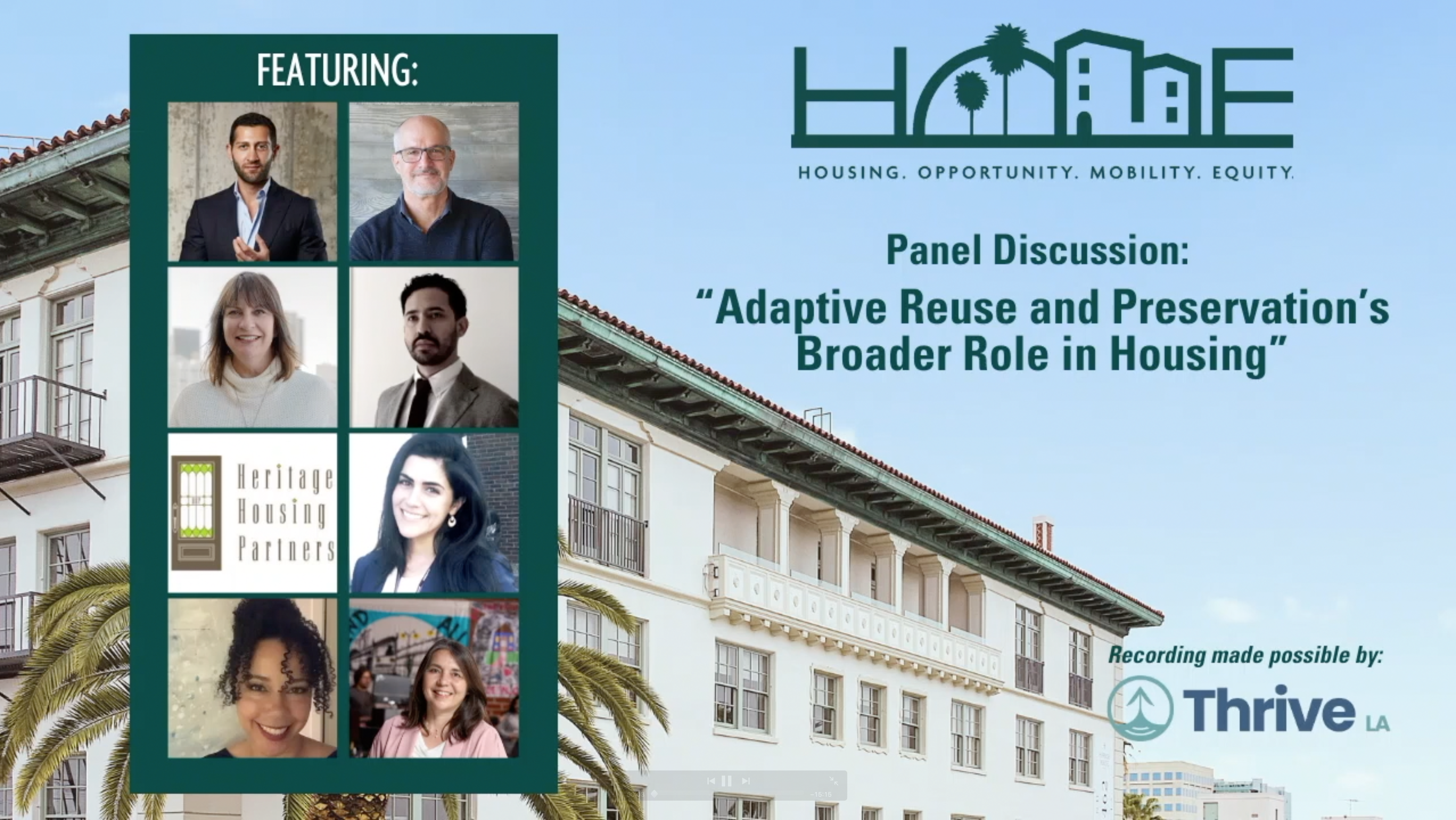
Los Angeles Conservancy H.O.M.E. - Housing. Opportunity. Mobility. Equity Panel Discussion in 2024
Karin Liljegren, FAIA, joined the The L.A. Conservancy for a panel discussion on housing and their new campaign, HOME, and the important role preservation plays in maintaining affordability, creating new housing, and offering solutions to the housing crisis in Los Angeles.
See what Karin has to say about why Adaptive Reuse worked in downtown Los Angeles.
Welcome to South LA Café: A Beacon of Community and Resilience designed by Omgivning

We are thrilled to announce our involvement in South LA Café (opening mid 2025), a vibrant cafe & community space located at the intersection of Vermont and Manchester—a historically significant area at the heart of South Los Angeles. Founded by the inspiring duo Joe and Celia Ward-Wallace in 2019, this café serves more than just coffee—it serves hope, resilience, and empowerment for the South LA community.
Omgivning the Developer

Introducing Omgivning’s New Office and the Launch of söm co-space
In 2023, Omgivning embarked on its most exciting, complex, and personal project to date: a small mixed-use development project in which they are the developers for their new Omgivning home as well the creation of a new industry-based co-working company called söm co-space (Swedish for a “seam” to mean to come together). Located at 1301 N. Broadway in north Chinatown, Omgivning repurposed and reinvigorated a seemingly nondescript building, embodying the principles that have guided their work for the last 13 years: interconnectedness, sustainability, and human-centered design. It allows Omgivning to do what they do best, uncover potential, this time for themselves.
An ideal Omgivning project, söm allows designers, architects, developers, and anyone involved in the built environment to do their best and most inspirational work, creating an example for future projects. This work includes:
Creating healthy, sustainable, and beautiful environments Cultivating good design to bring more value Evolving, growing, and learning with each other and through their craft And building thriving communities.
This new project has seen Omgivning expanding into new realms within the architecture and development lifecycle: as a developer, an entrepreneur, and a designer.
Omgivning the Entrepreneur
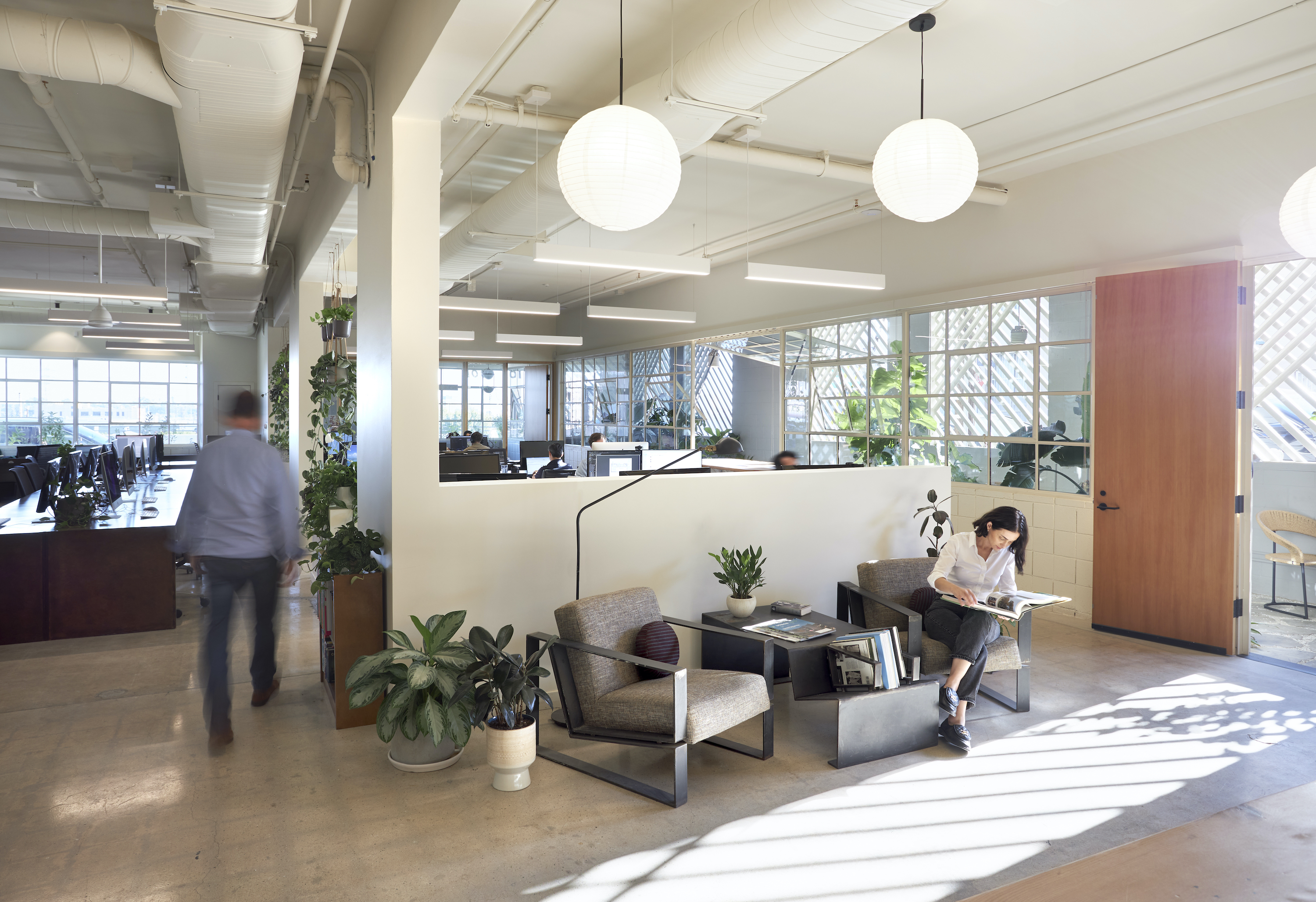
Omgivning the Entrepreneur
Söm is a Swedish word for “seam.” By definition, it is a place where separate pieces are connected or joined together. Söm is also now a shared workspace community for like-minded folks involved in creating built environments.
By founding söm co-space, Omgivning steps into another new role: that of entrepreneur. As a founder and operator of this new business, Omgivning will expand from an architecture and design firm to include a coworking company.
Former San Jose City Hall Wins Modernism in America Award
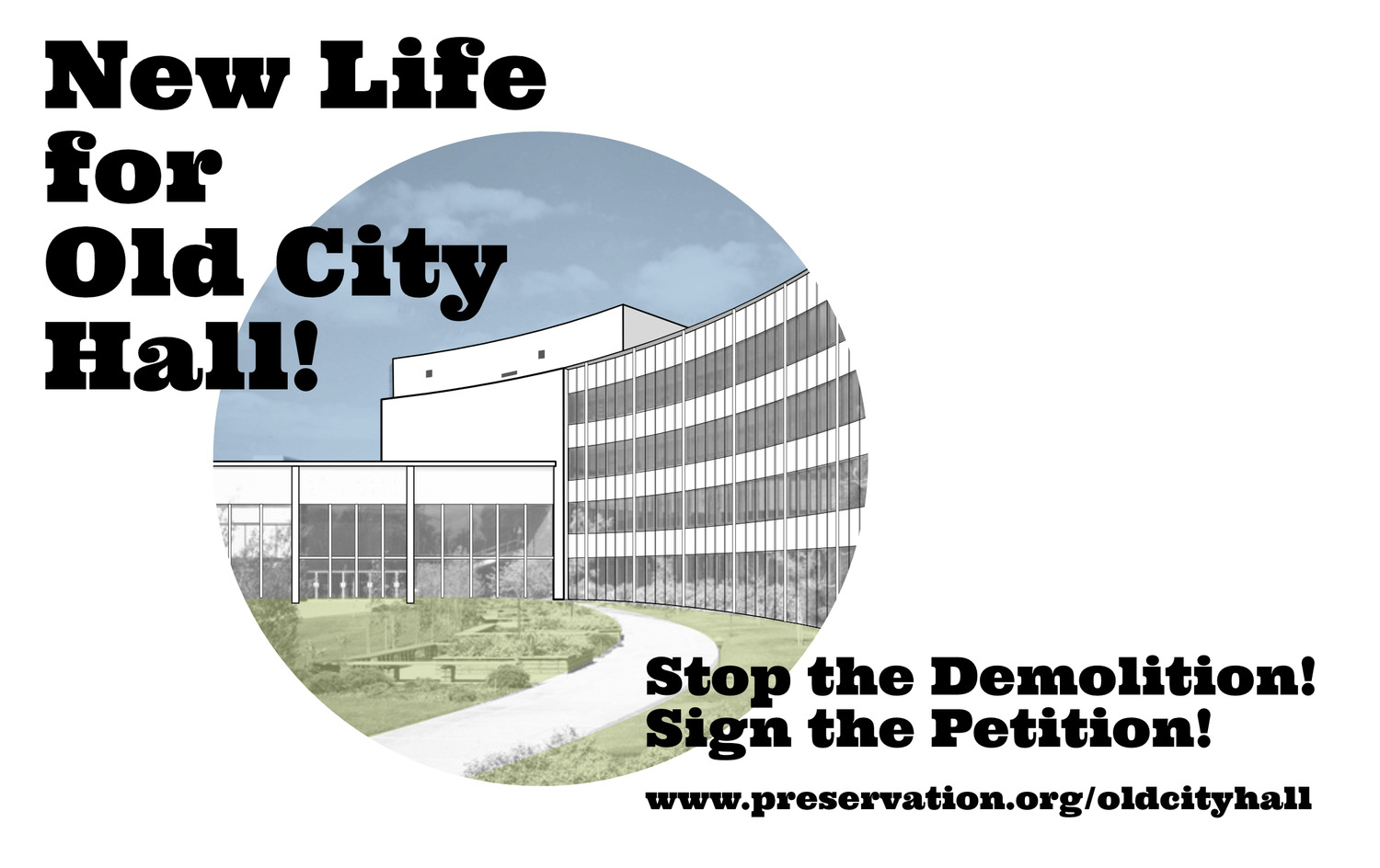
The Modernism in America Awards Jury and Docomomo US have awarded Omgivning and client Preservation Action Council of San Jose with a Citation of Merit for their advocacy efforts to save the Former San Jose City Hall, it was announced today.
The jury commended the team’s “proactive approach despite an uphill battle and the strong team of partners that was assembled to support the effort. The building now has a chance to be considered for further use.”
Celebrated when it opened in 1958, San Jose’s former City Hall was one of the first civic buildings built in International Style, a modernist style popularized in the mid-20th century in Europe and the U.S. Eligible for the National Register of Historic Places for its architectural and cultural significance, unfortunately, it has been vacant since 2005 when a new city hall was completed.
The Preservation Action Council of San Jose petitioned to keep the building from being demolished, expressing an interest in adaptive reuse in an effort to revitalize the surrounding area. Omgivning was then approached to author a study, making the case for preservation through an adaptive reuse strategy and a proposed new construction component.
The study detailed how the original space could be reconfigured for housing units, and a new, ground-up building could be added in the vacant space next door to increase the affordable unit count and densify the underutilized real estate parcel. Focused on human-centered solutions, the study also introduced open space amenities, access to a lively outdoor environment, and mixed-use opportunities, from residential and hotel to offices and retail.
This work has already yielded positive results, as the Santa Clara County Board of Supervisors voted in December 2022 to reject demolition and more thoroughly explore reuse options.
Adaptive Reuse: Office/Commercial to Residential - Urban Reprogramming

Adaptive Reuse
Sustainability. Housing. Community.
Amid the ongoing housing, climate, and public health crises facing our world today, the spaces affecting our lives are undergoing tectonic and likely irreversible shifts.
Since our founding in 2009, Omgivning has been committed to exploring the design needs of this new era and becoming increasingly convinced of the importance and urgency of reusing existing buildings. Adaptive reuse architecture breathes new life into existing structures by repurposing them for new use. Plus, adaptive reuse makes for more sustainable construction, more thriving communities, and more creative solutions to the pressing issues found in cities everywhere.
A recent AIA Firm Survey found that almost half (48%) of all projects currently being pursued by U.S. firms involve the renovation, rehabilitation, extension, or preservation of existing buildings. In fact, according to Bloomberg, for the first time in 20 years, renovations have overtaken new construction in architectural billings in the U.S.
Omgivning's focus on the creative reuse of commercial spaces allows us to help clients navigate this unprecedented landscape with innovative and cost-effective solutions. As with all of our work, the goal of this design report is to inspire people to take a closer look at the potential of an existing space or property. Together, we can reveal and attain a site's highest and best use, even under challenging conditions.
Design Ideas
The goal of these reports is to find potential in building types or spaces that might not normally be considered for housing as a form of urban reprogramming. Housing can be created in a variety of building types and we need to be constantly on the lookout for empty spaces.
In this hunt for creative solutions, spaces such as mini malls, large office buildings, light industrial buildings, and urban ground floor commercial spaces might be overlooked. But with the growing number of these sort of nontraditional buildings available — particularly in Southern California, where they make up so much of the landscape — Omgivning knows they are ripe for conversion to residential.
To make our case for this urban reprogramming, we analyzed existing conditions at four sites across Los Angeles and developed case studies for their conversion to housing. Our vision incorporates new operational models along with recommendations for their adaptive reuse. While remaining committed to human-centered design, we feel we can help clients achieve efficiency and higher rent and lease-ability, while also directly appealing to tenant needs with unique unit layouts and amenities.

EXISTING
Mini Malls
While vacancies in commercial spaces remain high, Los Angeles has a shortage of affordable housing that is able to foster a true sense of community. With both those things in mind, we believe that mini malls offer rich potential for conversion to residential use. With roughly 675 mini malls comprising approximately 24 million square feet of ground area (including parking) in Los Angeles alone, the possibilities for repurposing these structures are endless, whether it means converting an entire building or just the upper floors.

Born in Los Angeles after the 1973 oil crisis, when the bankruptcy of gas stations freed up an abundance of corner lots for redevelopment, mini malls became increasingly popular at these sites which are set back from the street with ample surface parking, with some also providing additional below-grade parking. Often located on corner lots among the city's long commercial corridors, these buildings are situated to provide convenient access to other areas of the city by a variety of transit options including subway, bus, light rail, and bike lanes. The particular mini mall used in our concept is a 20,000 square foot building located at the corner of Santa Monica Boulevard and Armacost Avenue in West Los Angeles.
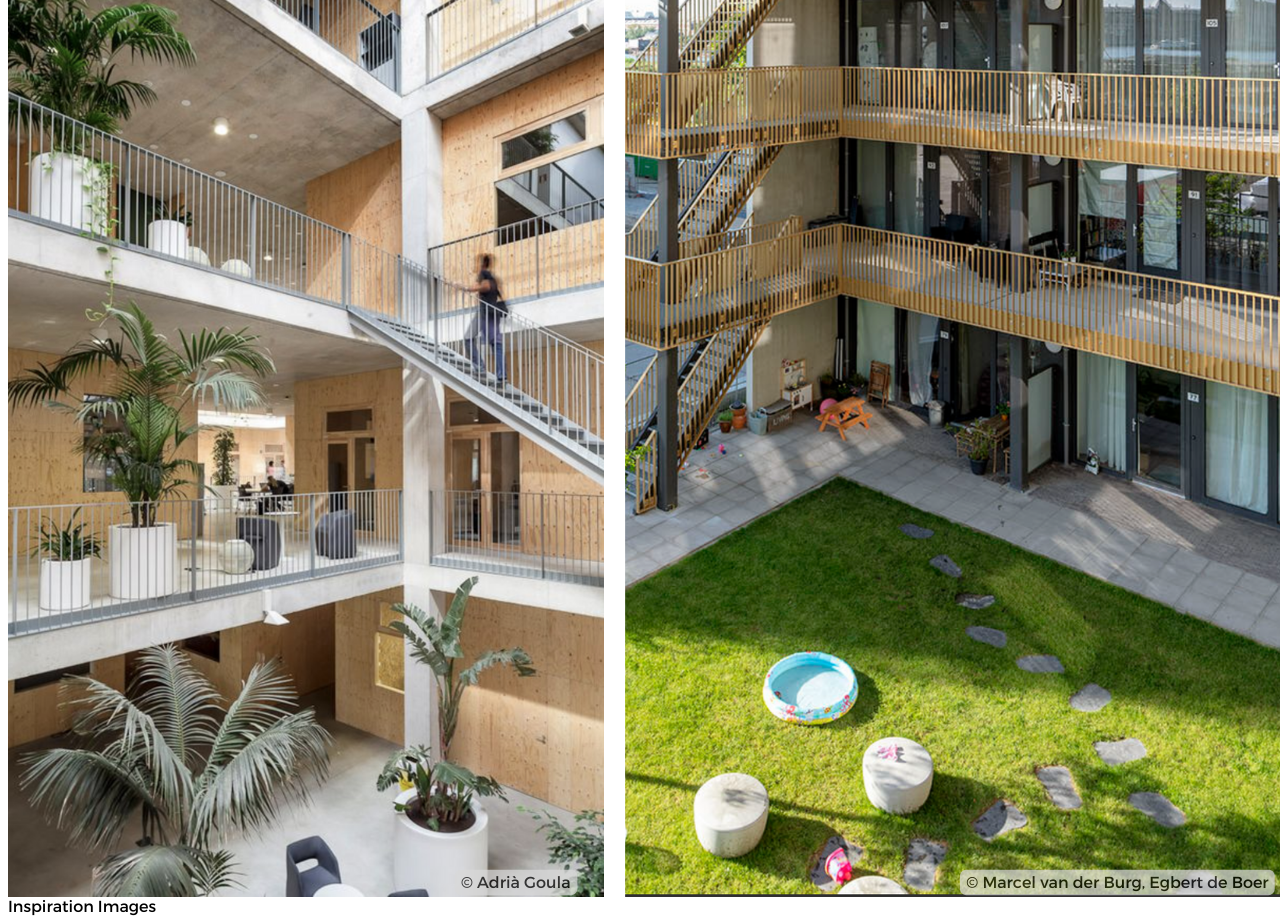 In our vision for the reuse of this two-story L-shaped building, the majority of the structure remains intact, including circulation, stairways, and below-grade parking. Since mini malls are often newer buildings, the need for structural upgrades with the change of use will be reduced or even eliminated, allowing for a low cost conversion.
In our vision for the reuse of this two-story L-shaped building, the majority of the structure remains intact, including circulation, stairways, and below-grade parking. Since mini malls are often newer buildings, the need for structural upgrades with the change of use will be reduced or even eliminated, allowing for a low cost conversion.
Adaptive Reuse: Case Studies of Large Floor Plate Office/Commercial to Residential
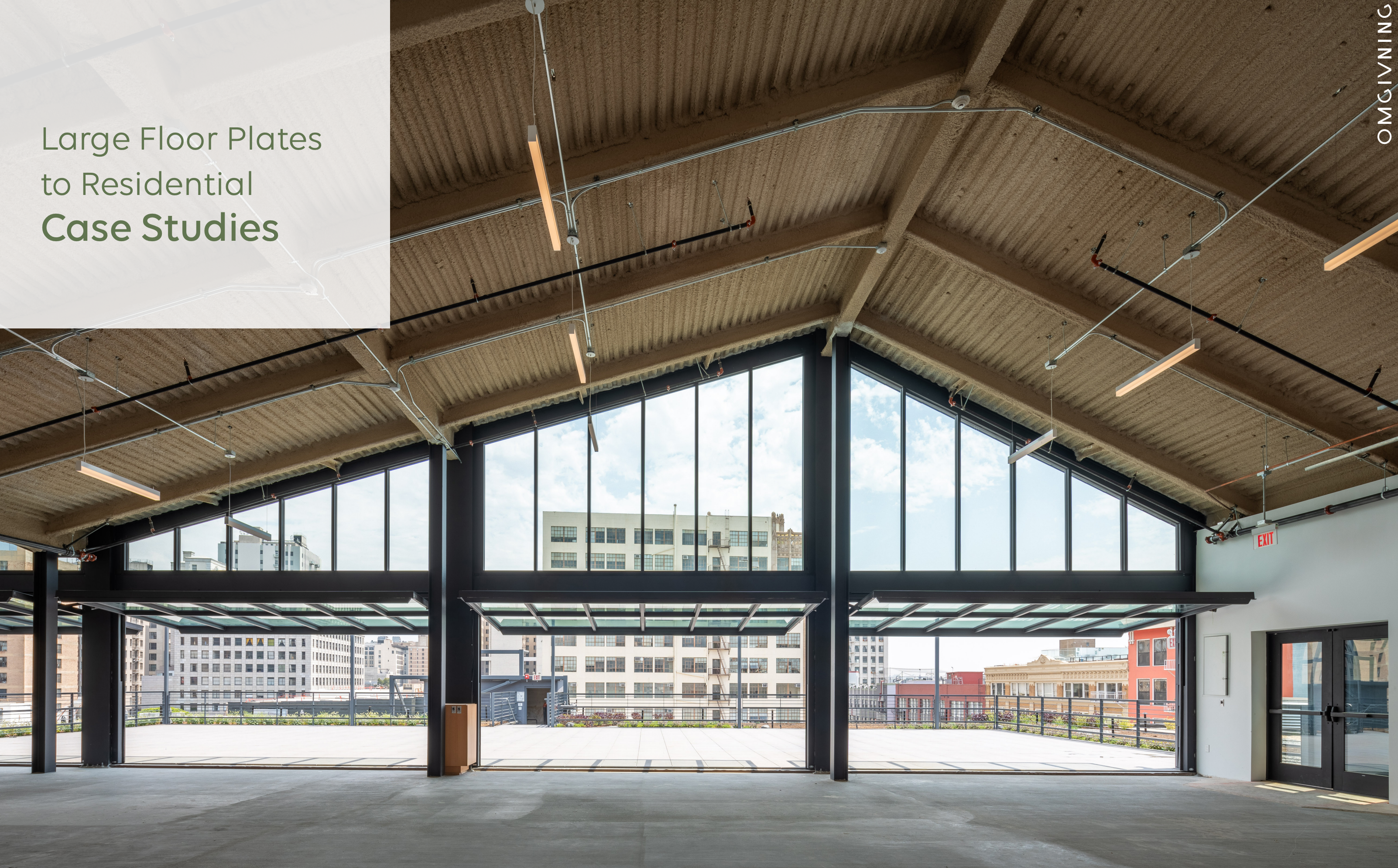
Adaptive Reuse
Sustainability. Housing. Community.
Amid the ongoing housing, climate, and public health crises facing our world today, the spaces affecting our lives are undergoing tectonic and likely irreversible shifts.
Since our founding in 2009, we at Omgivning have been committed to exploring the design needs of this new era and becoming increasingly convinced of the importance and urgency of reusing existing buildings. Adaptive reuse architecture breathes new life into existing structures by repurposing them for new use. And as Omgivning knows, and so many more are now learning, adaptive reuse makes for more sustainable construction, more thriving communities, and more creative solutions to the pressing issues found in cities everywhere.
A recent AIA Firm Survey found that almost half (48%) of all projects currently being pursued by U.S. firms involve the renovation, rehabilitation, extension, or preservation of existing buildings. In fact, according to Bloomberg, for the first time in 20 years, renovations have overtaken new construction in architectural billings in the U.S. Omgivning's focus on the creative reuse of commercial spaces allows us to help clients navigate this unprecedented landscape with innovative and cost-effective solutions.
As with all of our work, the goal of this design report is to inspire people to take a closer look at the potential of an existing space or property. Together, we can reveal and attain a site's highest and best use, even under challenging conditions.
